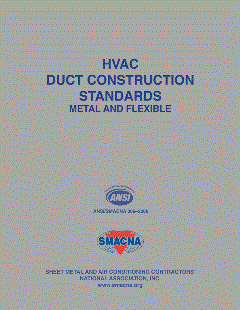
Seeking to make this new high school energy-efficient, designers specified a resilient fiberglass blanket insulation to blanket about 200,000 sq ft of galvanized steel ductwork. The wrap is designed to seal potential leaks and prevent loss of conditioned air.
When officials in the School City of Hobart district in Hobart, IN, made plans to build a new, expansive, high-tech high school, one of the focal points was having energy-efficient mechanical systems. School City of Hobart hired Envoy, Inc., of Indianapolis, as construction manager and Gibraltar Design, Inc., an Indianapolis-based, full-service A/E and design firm, to design and build an efficient new school with high-tech features to prepare students for the world of tomorrow.
Some of the school’s standout amenities include a 650-seat auditorium with a modern acoustics and sound system, a new football stadium, a 10,000 sq-ft media center with a coffee bar for students and a professional library for teachers, PCs or laptop computers in every classroom, wireless Internet, and several other technological features. Students will continue to attend the existing Hobart High School facility until the completion of the Fall 2008 semester.
When it came to the HVAC system portion of the project, Gibraltar Design’s specifications included a VAV distribution system for the school’s classrooms with fan-powered boxes and terminal reheat. For the large gathering areas, Gibraltar’s design called for constant air volume distribution systems. The building’s cooling system is a water cooled centrifugal chiller, and the school will be heated with high-efficiency condensing boilers. The duct system consists of about 200,000 sq ft of galvanized steel ductwork.
Tucking The Duct In
To provide added thermal efficiency to the ductwork, Gibraltar Design specified duct wrap for the HVAC design. With the recommendation of Coleman Insulation Company, the project’s mechanical insulation contractor, Gibraltar Design selected CertainTeed® SoftTouch™ Duct Wrap, a resilient fiberglass blanket insulation applied to the exterior of sheet metal ductwork to seal potential leaks, preventing loss of valuable heated or cooled air.“We were looking for a good-quality, energy-efficient duct wrap that could be installed at a lower cost,” said Craig Carlson, project engineer for Gibraltar Design. Envoy hired Correct Construction as mechanical contractor and Morris Sheet Metal to fabricate and install the ductwork.
Morris Sheet Metal began work in December 2006 fabricating internally insulated sheet metal ducts of varying sizes. For the larger gathering areas, such as the auditorium, great hall, gymnasium, and field house, the contractor made large, round ducts, ranging from 20- to 48-in. dia. For the rest of the school, they fabricated rectangular ducts in sizes from 8-in.-by-6-in. to 96-in.-by 24-in.
As the new ducts were produced, Morris Sheet Metal began installing them with a crew of eight throughout the school building. They hung the larger ductwork with trapeze hangers, made from all thread rod and angle iron. They hung the smaller ducts with 1-in. metal straps.
Ramping Up For The Biggest Challenge
The contractor’s biggest challenge came when hanging ductwork in the auditorium, which has sloped floors and a 40-ft structure above. To reach the structure, the crew used tall scissor lifts, but the sloped floors presented a difficulty, placing them at awkward angles during duct installation. The crew was able to overcome this obstacle, however, by using ramps.“We had solid wood ramps built for the scissor lifts,” said Curt Kelsey, project manager for Morris Sheet Metal. “Every time we wanted to move to another spot, we had to drive off the ramp, reposition it, drive back on it, and load the lift up with another piece of duct and take it up to the structure above. This helped us to go straight up, instead of at an angle.”
Coleman Insulation Company followed behind the Morris Sheet Metal Crew, installing SoftTouch Duct Wrap over the ductwork. The HVAC portion of the Hobart High School construction project is expected to be complete in July, and the school is scheduled to open for classes in January 2009. So far, the school has received positive reviews.
“We’re very pleased with how the school is turning out,” Carlson said. “We’ve got some very good contractors working on the project.” The new Hobart High School will hold 1,400 students, with room to grow to the east and west of the building. The building is 331,750 sq ft and sits on 84 acres of land.ES






